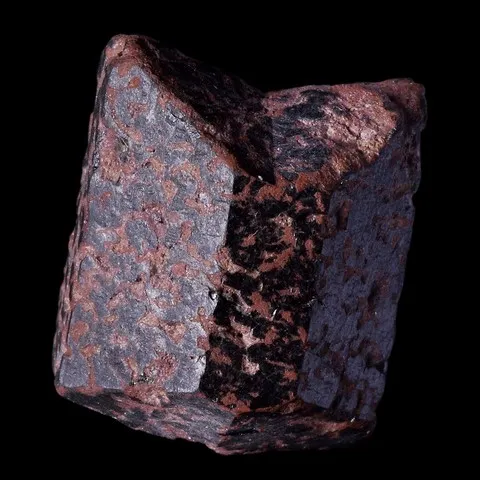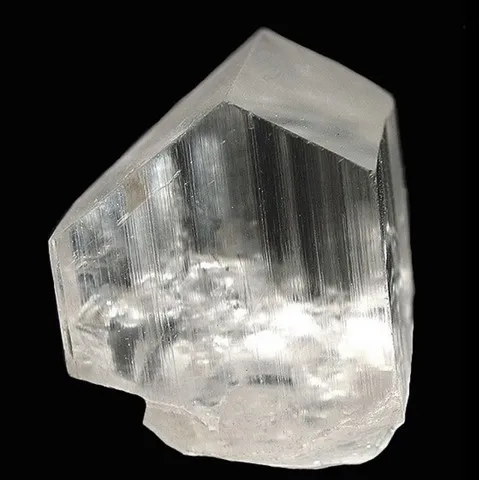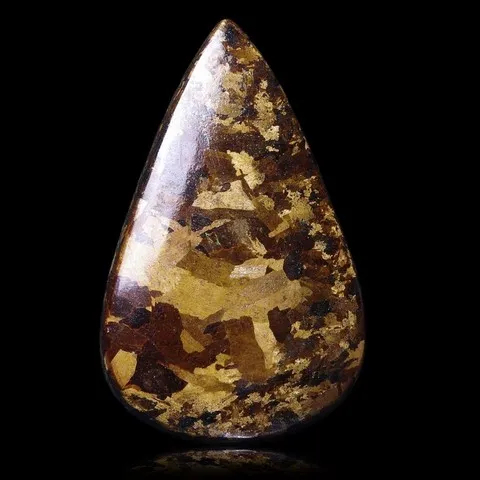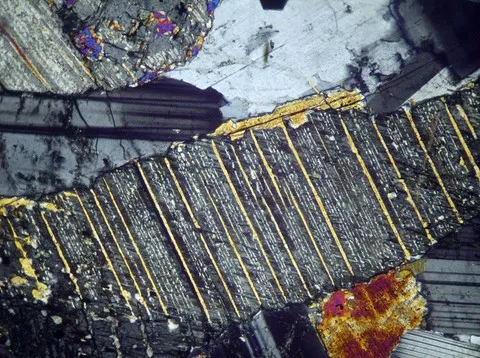PYROXENE
Class : Silicates
Subclass : Inosilicates
Crystal system : Orthorhombic or monoclinic
Chemistry : XYSi2O6
Rarity : Very common
Pyroxenes constitute an essential group of inosilicates with the general formula XYZ2O6 (with X = Ca, Fe2+, Mg2+, Na+, Zn2+; Y = Al3+, Cr3+, Fe2+, Fe3+, Mg2+, Mn2+, Ti4+, V3+; Z = Al3+, Si4+). Their name comes from the Greek puros (fire) and xenos (stranger) because their discoverer, Haüy, initially thought that it was not a primary mineral of igneous rocks. They are divided into two sets according to their crystal system : orthopyroxenes (orthorhombic) and clinopyroxenes (monoclinic). The rarer orthopyroxenes mainly include enstatite and hypersthene, while the more common clinopyroxenes are subdivided into ferromagnesian and calcium (diopside, augite, hedenbergite, pigeonite) and alkaline (spodumene, jadeite) clinopyroxenes. The orthopyroxenes form lamellar crystals, the clinopyroxenes short prisms with varied terminations, sometimes with fibrous facies. The color varies with iron content and ranges from transparent (diopside) to opaque (augite, hedenbergite). Pyroxenes have two sharp cleavages on the (001) face, forming between them an angle of 87°. Under the microscope, this is an essential criterion for distinguishing them from amphiboles whose cleavages intersect at 124°. Pyroxenes are essential minerals of ultrabasic, basic and intermediate igneous rocks as well as many metamorphic rocks. Magnesian pyroxenes weather to serpentine (antigorite), but the most common process is uralitization (transformation to amphibole). Pyroxenes have no particular use, but some varieties are used in ornamentation and jewelry (cabochons and gemstones), including jadeite, highly prized in Asia, spodumene (kunzite), hyperstene, enstatite (bronzite variety) and diopside.
Pyroxene in France and in the World
Twinning
Refer to the individual sheets of each species to learn more about their twins. Orthopyroxenes such as enstatite may exhibit exsolutions of clinopyroxene (augite) just as augite may exhibit exsolutions of orthopyroxene. These oriented exsolutions are often confused with twinning.
On the left, a photo of an orthopyroxene exsolution in augite (yellow bands) in analyzed-polarized light.
Fakes and treatments
Hardness : 5.5
Density : 3.2 to 3.5
Fracture : Irregular
Trace : Variable
TP : Opaque to transparent
IR : Variable
Birefringence : Variable
Optical character : Variable
Pleochroism : Variable
Fluorescence : Variable
Solubility : Hydrofluoric acid
Magnetism : Variable
Radioactivity : None










